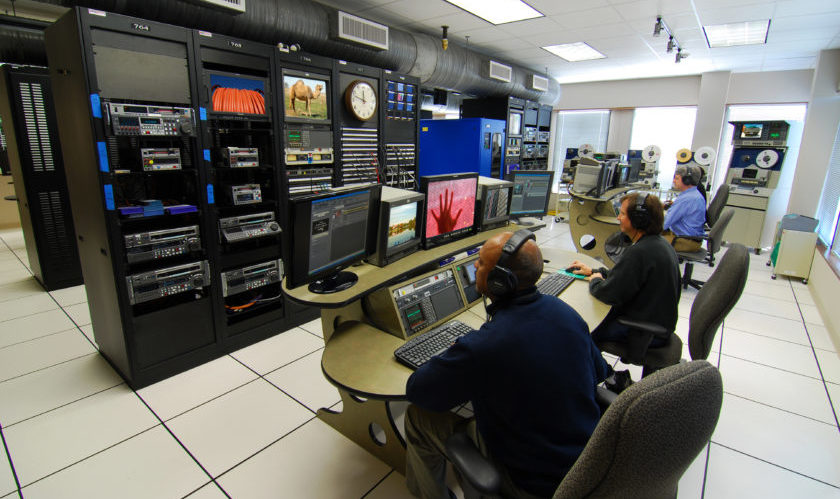Exclusives

Crawford Media: Adapting to the Digital Age
Story Highlights
In an industry where content is king, managing the fluid/variable content types is critical. With a constant awareness on evolving technologies, longtime industry staple Crawford Media Services has elevated the playing field on premium content services.
In addition to migrating content to digital from more than 30 legacy formats, Crawford hosts enterprise-class digital archive storage and offers a host of metadata entry, captioning, and clip selection services. An experienced team of engineers supervises the Crawford’s service portfolio, which helps enhance the value of content by enabling the search, access, and monetization of your media.
Steve Davis, retiring EVP and CTO for Crawford, spoke with the Media & Entertainment Services Alliance (MESA) about the changes the company has witnessed in the M&E space over the years and what it does differently than its competitors.
MESA: 2016 marked Crawford’s 35th anniversary in the media services business. How did Crawford first come about, and how quickly, in just the last few years, have needs of content companies changed?
Davis: In the early ‘80s, the demand in Atlanta for live events via satellite and video post production was rampant. Jesse Crawford met that need with “bleeding edge” services and technology through Crawford Communications. Over the next 30 years Jesse pushed the company to early adoption of increasingly higher end production and post technologies.
By 2007, Crawford Media Management (CMM) was launched, and three years later – and in anticipation of a file-based production and distribution environment – we rebranded to Crawford Media Services. Since then, we’ve mass digitized and stored millions of hours of existing legacy content. Another result of this multi-faceted strategy was the creation of our Metaforce platform. Using a distributed onshore workforce and a proprietary cloud platform, Metaforce runs the gamut when it comes to descriptive metadata services.
This constant anticipation and aggressive embrace of change are the factors that have kept Crawford “in the game” for so many years, with shifts in technology and infrastructure always in the service of our artists and clients.
MESA: What has the company learned about the metadata and library search needs of the media and entertainment business? And what could companies be doing better when it comes to digital asset management?
 Davis: This is a deep subject, and applies to all industries, including entertainment.
Davis: This is a deep subject, and applies to all industries, including entertainment.
In our current search driven world, metadata is increasingly important. Accurate, reliable search results mean money in the form of findable and re-usable, monetizable content.
For that you need a well-designed schema that is pre-populated with relevant, consistent metadata. We developed Metaforce with all of these needs in mind.
The most accurate metadata is written by well-trained humans. Some companies have attempted to offshore metadata writing labor or to use software to automatically generate metadata. In most cases the savings from these approaches, when compared to the loss of quality, does not equate. If someone is paying for (or being paid for) the results of their searches, then having about 30% noise in the metadata is not acceptable. Metaforce makes it possible to create high quality metadata significantly faster and less expensively than organizations can manage in house.
MESA: Mass digitization of archived content on legacy formats is among Crawford’s main offerings in the M&E space. What do companies looking to digitize older assets need to be aware of before they undertake the challenge?
Davis: Often times, clients do not have good information about their collections. They tend to be under the misconception that there can be a preexisting “rate per tape” that is roughly the same for every tape or film in their collection.
There are a number of significant influences on price and schedule, including the run times of the assets, the physical condition, the accessibility, the scarcity of machines and robustness of various formats, the delivery file types, the method of delivery, and how well the assets are cataloged. Our experienced engineering team will execute a discovery or pilot project in order to properly scope and price the project. In most cases, this fact-finding effort is well worth the time and expense.
MESA: What are some of Crawford’s favorite use case examples, where clients have made especially good use of what the company offers?
 Davis: One example is J. Walter Thompson who have used our LIFT migration team, and AMBER archive to manage both legacy and ongoing assets for their U.S. Marine Corps account. Another is the American Archive of Public Broadcasting, which used our migration and logistics expertise to migrate over 70,000 assets from over 100 PBS affiliates across the United States and US Territories.
Davis: One example is J. Walter Thompson who have used our LIFT migration team, and AMBER archive to manage both legacy and ongoing assets for their U.S. Marine Corps account. Another is the American Archive of Public Broadcasting, which used our migration and logistics expertise to migrate over 70,000 assets from over 100 PBS affiliates across the United States and US Territories.
For metadata services, Viacom called on Metaforce as part of the ongoing MTV Vault Project. To date, over 350,000 fully described unique events have been created across more than 50,000 assets. Comprehensive metadata – up to 20 fields per record – is imported into Viacom’s digital asset management (DAM) system through a secure API with our platform.
The resulting searchability allows the Viacom editorial teams to curate and reuse clips from the freshly tagged events, interviews, appearances, performances, and news pieces for future programming and current social media content.
MESA: What’s next for Crawford, what can we look forward to from the company?
Davis: We have recently made a major capital investment to upgrade our archive infrastructure to Quantum Lattus erasure code storage technology, a very interesting discussion for another time. We are currently completing contracts for new migration and metadata projects as well as expanding our portfolio to address assets beyond media.









